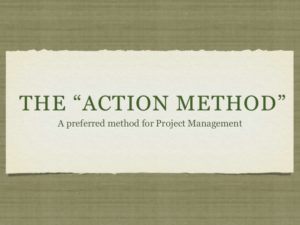 This month’s post all have one common denominator. They all focus on Productivity Boosting Techniques that help teach us refine our work habits and employ techniques to help us work more efficiently. So far, I’ve discussed the benefits of decluttering your workspace, using the Get Things Done or GTD method, the very fun, time based Pomodoro Technique, and the quirkily named Eat the Frog method of boosting productivity. For the last post in our Productivity Boosting Techniques for this month, I’ll talk about how sometimes, the best tricks are the most simple ones.
This month’s post all have one common denominator. They all focus on Productivity Boosting Techniques that help teach us refine our work habits and employ techniques to help us work more efficiently. So far, I’ve discussed the benefits of decluttering your workspace, using the Get Things Done or GTD method, the very fun, time based Pomodoro Technique, and the quirkily named Eat the Frog method of boosting productivity. For the last post in our Productivity Boosting Techniques for this month, I’ll talk about how sometimes, the best tricks are the most simple ones.
I know that by now we all have our routines and personal techniques of organizing tasks and keeping on top of work. We start the week with a concrete plan and a list of what we should be working on for each day. But as the week progresses, ad hoc tasks tend to creep in. Sometimes, we find ourselves with work piled up. This is when the amount of work gets too overwhelming. We tend to lose our focus and resort to just “winging it.” This means that, somewhere along the way (and in between that pile of work), we tend to miss deadlines or miss important tasks. We may feel that the only way to get ourselves out of the funk is to clear out all the work and start at the beginning to get ourselves re-organized.
Sometimes, going back to basic is the best way to address overwhelming tasks in order to regain focus. And that’s just what the Action method teaches us. In the book “Making Ideas Happen” by Scott Belsky, he teaches us that the best methods for managing projects are simple and easy to perform. The idea behind the Action method is to break down a project into simple, intuitive components.
Ready to know how it works? Here’s what you need to do:
The Action method operates on one simple premise: that everything is a project. That monthly report you are working on is a project, so is organizing your kitchen. Once you get the hang of thinking that everything is a project, you can start identifying and breaking it down into it’s basic components. Then, all you have to do is to imagine these components as items that you can place into “buckets”.
The next step is to organize these components into the following buckets:
- Action Steps: Action Steps are precise and explicit tasks that help you make progress towards completing the project. They are concrete, actionable items: things that you can do something about immediately or within a specific time-frame. Take the kitchen organizing example: organizing the kitchen pantry, clearing out the cabinets under the sink, and cleaning the countertops are all examples of action steps.
- References: This is a list of any project related info or resources that you need to get tasks done. They could be sketches, manuals, notes, website links or anything that are readily accessible for you to refer to in relation to your project.
- Backburners: backburner items are things that don’t need to be done right away. They are things that you don’t have to action immediately but would have to be cleared out of the queue someday. In short, they are low priority tasks. In our kitchen organizing example, it could be: buy more bins, replace countertop with marble, or replace kitchen fixtures.
With this, I conclude our Productivity Boosting Techniques series for the month. I’d love to know which productivity boosting technique is your favorite. Let me know what works for you! As usual remember to: Stay Humble, Hustle Hard. Good luck!
Written by Jaie O.- The Help